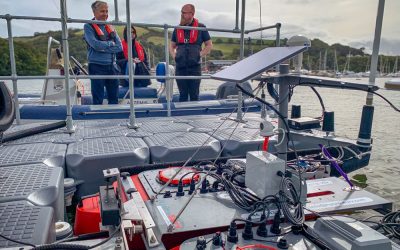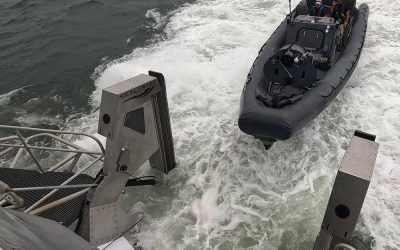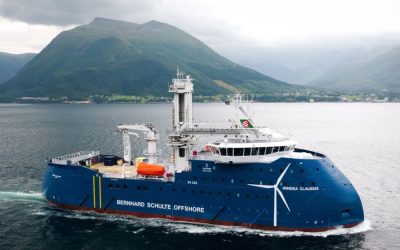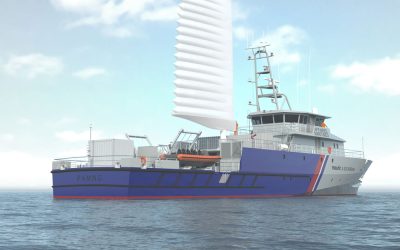These days of political unrest mean directly facing another set of challenges: how innovation meets the new realities of warfare. This isn’t just a matter for the UK’s military, but its industry and academic partners too. In fact, the recurring theme of the latest UK Naval Engineering Science & Technology (UKNEST) event made clear that difficult but necessary conversations are on the cards.
So, what is the issue? “Current procurement processes are risk-averse,” says UKNEST’s Science & Technology Working Group co-chair, Jake Rigby. He outlines how the speakers at the organisation’s Advanced Materials conference shared a clear message: this approach to risk can slow, or derail, the acceptance and integration of new technologies and materials at a moment when we may not be able to afford that luxury.
For example, Robin Oakley, principal materials and corrosion engineer at QinetiQ, asks of the many potential developments he’s seen over three decades: why is it that so many haven’t made good on their promise? You can have “brilliant new materials, lots of amazing benefits”, he says. But the inevitable question that follows is: “Are you sure you’re not bringing any new risks to our established design space?”
Submarine developments highlight all these risk concerns and add another dimension. “As we push the boundaries in terms of engineering scope and what’s expected from the actual ship or the boat, material, physical and mechanical properties are being pushed as well,” says Ben Turner, Copper Alloys MD. “With shock loads increasing with each class, we are finding traditional materials are simply not strong enough.” Therefore, Copper Alloys’ part in a case study on doubling the life of the Royal Navy’s Dreadnought-class submarine has focused on an alternative metal. Turner explains: “Just to give you an idea, on one of those boats there might be millions of components.” Problematically, the current offerings don’t necessarily last particularly long in situ. Turner adds: “You’d be surprised how much has to be replaced just to give [the submarine] an extra 10 or 15 years in the sea.”
Look closer, and the number of metals found in these parts is surprisingly low. That’s not because better alternatives can’t be found; it’s because the lists of ‘acceptable’ materials can be years or even decades out of date, claims Turner, adding: “Really, there are just five to 10 metals underpinning all of that complexity. If you could improve on just one of these [affordable, primarily copper-based alloys], you could indirectly improve the lifespan of tens of thousands of components.”
This is where a tougher material that can be manufactured at a reasonable cost, and to timeframes and at scale, comes in. CNC-1 (CuNi30Cr2) is a copper-nickel-chromium alloy in a wrought form, which quadruples the strength of the cast material. Combined with advances in machining capability, it has enabled the production of parts for an equivalent or lower cost than casting structures.
So, while CNC-1 can’t compete with the strength of nickel-based super alloys or super duplex stainless steel, it’s still the toughest of all the copper alloys, retaining electrochemical compatibility with onboard systems and resistance to biofouling. Plus, the expected lifespan of wetted parts is over 50 years.
Despite these benefits, there is no guarantee that CNC-1 will be adopted and used. “Design engineers have to work from a range of alloys that the organisation says is acceptable,” says Turner. “It’s like a straitjacket…this becomes the limiting factor.” Turner adds that it might be high time the sector begins “designing alloys around the engineering requirements instead of engineering requirements around the alloys”.

Friction stir welding (FSW) can join tricky or unusual steels – but can it cross the culture barrier? (image: The Welding Institute)
Even joining materials can be tangled in the web of risk-averse processes. “A lot of fabrication is actually done using arc welding because it’s tried and tested,” comments Robert Scudamore, former associate director of The Welding Institute. That’s despite the potential drawbacks of multiple passes, such as thermal stresses and distortions, and despite the availability of other alternatives.
However, Scudamore hopes that a crossover from friction stir welding (FSW) could make a difference. Initially developed for aluminium, FSW doesn’t melt the material itself, says Scudamore: “You have a pin plunged into the material and it stirs the joint together” – resulting in a thermo-mechanically forged join. Users are now beginning to adapt FSW for more challenging materials: “What we’re trying to do now is progress into steel,” Scudamore adds.
While FSW requires a very hard ‘pin’ and more robust equipment, there are advantages. Take plate strengthening, where the usual approach means adding molten metal into an angle. This requires multiple passes, which create a large heat-affected zone with potential for cracking. Neither are the resulting thick welds particularly easy to inspect. By contrast, the FSW method uses rolled T-sections with a symmetrical, one-shot butt weld and an extremely reduced heat zone. The result is higher-strength joins, increased consistency and reduced distortion. Moreover, Scudamore notes that the tensile strength of the joint is typically 25% higher than that of the parent material.
For the full article, check out the June 2025 issue of The Naval Architect




